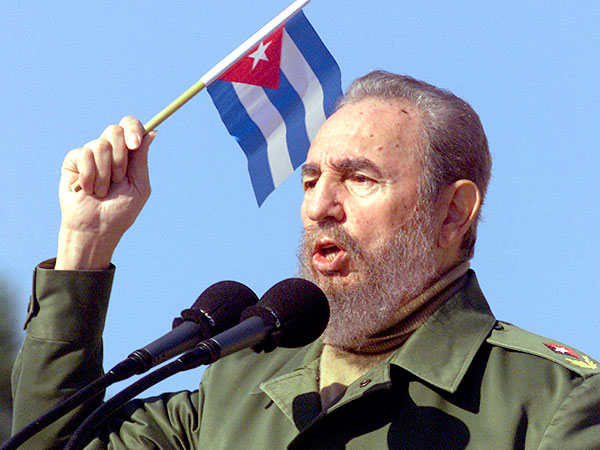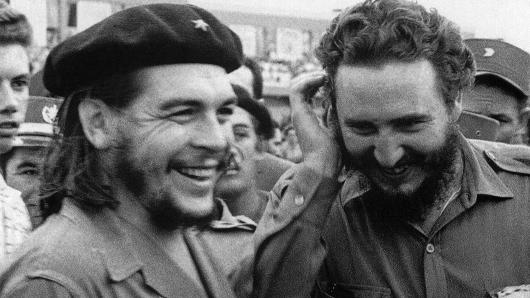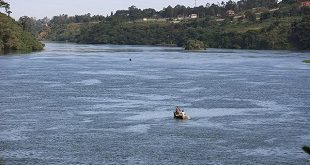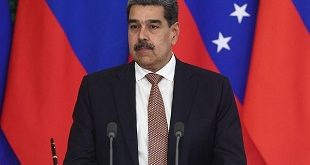
Havana, Cuba | AFP |
Cuban revolutionary icon Fidel Castro died late Friday in Havana, his brother, President Raul Castro, announced on national television.
“The commander in chief of the Cuban revolution died at 22:29 hours this evening,” the president announced on national television. Fidel Castro will be cremated on Saturday.
Castro turned 90 in August in an island transformed from the one he led for half a century.
Both loved as a hero and hated as a dictator, Castro is one of the giant figures of modern history.
He defied 10 US presidents during his 48 years in power, but in the decade since he stepped aside Cuba has become a different world. His sworn foe, the United States, is no longer officially Cuba’s enemy.

Fidel Castro was a friend, brother and leader. My sincere condolences to the people of the Republic of Cuba. May his soul rest in peace pic.twitter.com/atwhBzizvx
— Yoweri K Museveni (@KagutaMuseveni) November 26, 2016
1. Today the world lost an iconic revolutionary leader Fidel Castro who liberated his nation from all vestiges of imperialism.
— Imran Khan (@ImranKhanPTI) November 26, 2016
“Your Independence….. my independence” Fidel Castro.
Africa will never forget ✊#FidelCastro #Castro101#RIPCastro pic.twitter.com/J4UwfTkrKn— Martha ✍ (@ChilongoshiM) November 26, 2016
Fidel Castro is dead. He survived 600 assassination attempts & was a great friend of Africa, supporting the fight against the imperialists. pic.twitter.com/0wmsex7TCj
— Ahmed Mohamed (@asmali77) November 26, 2016
“Ideas do not need weapons” — #FidelCastro pic.twitter.com/aruL9fqX6W
— Mohammed Dewji MO (@moodewji) November 26, 2016
Che Guevara and Fidel Castro on a fishing trip, 1960. Photograph by Alberto Korda. pic.twitter.com/m7hrs6D2Vl
— History In Pictures (@HistoryInPix) November 26, 2016
Warrior
At his birthday, he was white-bearded and frail. Castro was a strapping 32-year-old in green fatigues when he led a rebel force that drove out dictator Fulgencio Batista in 1959.
His image as a revolutionary warrior storming down from the mountains, rifle in hand, stirred his admirers’ imagination. His communist policies and iron-fisted treatment of rivals drew the hostility of the United States and other Western powers.
His voice used to boom out over Havana in speeches that lasted hours. In his last days, he was rarely heard from, although his face still smiled out from countless billboards across the Caribbean island.
In an article published by official media in August, Castro showed that he had lost little of his old fire, particularly when it comes to his longtime enemy the United States.
He criticized US President Barack Obama for failing to explicitly apologize during his historic visit to Japan in May for Washington’s decision to drop the atomic bomb on Hiroshima in 1945. He condemned as “equally criminal” the bombing of Nagasaki three days later.
Referring to the scores of US assassination plots against him — Cuban intelligence services numbered them at more than 600, some reportedly involving poisoned or explosive cigars — he said, “I almost laughed at the Machiavellian plans of US presidents.”
‘Dictator’
Although mostly out of sight in the past four eyars, Castro has not been out of the minds of ordinary Cubans. State newspapers on the communist island for days printed pictures and articles about him to mark his 90th year. Concerts were played in his honor.
Fidel Castro retired from public life in 2006 due to ill health. He formally transferred the presidency to his brother Raul in 2008.
But Fidel continued to exert “an indirect influence through certain figures in the regime who are not comfortable with the reforms that Raul has made,” said Kevin Casas-Zamora, a political scientist at Oxford University.
Raul, 85, has gradually opened up Cuba’s economy and foreign relations, restoring diplomatic relations with Fidel’s old foe, the United States.
Such reforms were unthinkable when Cuba was a pro-Soviet state on the United States’ doorstep during the Cold War.
Fidel gave free healthcare, housing and schooling to citizens on a poor island.
“Fidel is everything. He is sport, he is culture. He is rebellion. If Cubans are rebels, it is thanks to Fidel,” said Manuel Bravo, a 48-year-old glazier.
But the former president’s regime is also accused by human rights groups of brutally repressing dissent by torturing and jailing opponents.
“I will remember him as a dictator,” said Martha Beatriz Roque, 71, an anti-Castrodissident who was one of 75 opponents jailed in the “black spring” of 2003.
“He is the man of ‘E’s: egomaniacal, egotistical, egocentric,” she said.
‘Hero’
Castro reportedly suffered from intestinal illness in recent years. But official secrecy shrouded his condition.
At his last appearance at the close of the Cuban Communist Party Congress, he was dressed in a blue tracksuit and speaking in a trembling voice. He seemed to say goodbye.
“Soon I’ll be like all the rest,” he said. “Everyone’s turn comes.”
After Barack Obama visited Cuba in March, Castro recalled the island’s long enmity with the United States, including Washington’s backing for the failed invasion of Cuba at the Bay of Pigs in 1961.
His bitterness over that botched CIA plot played a part in pushing the world to the brink of nuclear war during the Cuban missile crisis the following year. The Soviet Union agreed to his request to send ballistic missiles to Cuba.
“For most Latin Americans, Fidel Castro represents heroic resistance to the hegemony and control of the United States,” said Peter Hakim, an international affairs expert at Inter-American Dialogue, a think tank.
“But I do not think he will be seen as a hero for much longer… The modern world has left him and Cuba behind.”
 The Independent Uganda: You get the Truth we Pay the Price
The Independent Uganda: You get the Truth we Pay the Price





